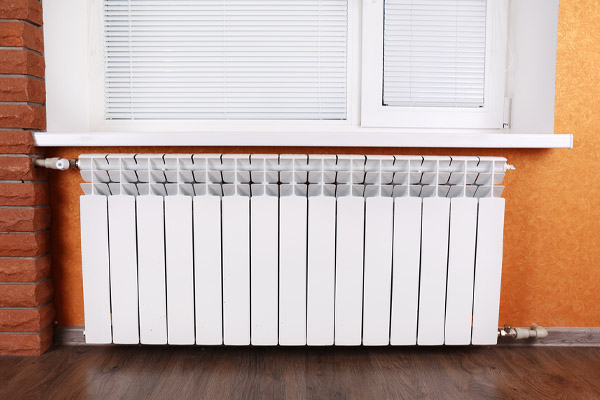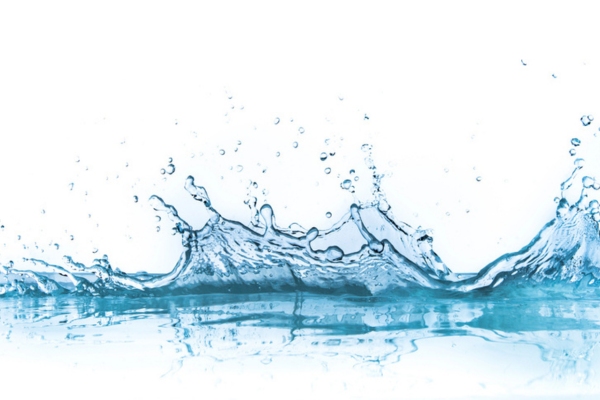Contents
- 1 Exploring the Role of Radiators in Hydronic Heating Systems
- 2 Winter Readiness: Preparing Your Heating Radiator for the Chilly Months
- 3 Signs That Your Radiator Requires Maintenance
- 4 The Critical Role of a Radiator in Hydronic Heating Systems
- 5 Why Winter Preparedness is Essential for Heating Systems
- 6 Preparing Your Radiator for Winter: Essential Steps
- 7 FAQ: Preparing Your Hydronic Oil Heating Radiator for Winter
- 7.1 What Are The Essential Steps to Winterize My Hydronic Heating Radiator?
- 7.2 What Signs Indicate That My Oil Heating Radiator Requires Professional Servicing?
- 7.3 Why Should I Keep My Radiator Clean?
- 7.4 What Advantages Does Zoning Offer for My Hydronic Heating System?
- 7.5 How Does Thermostatic Control Improve a Hydronic Heating System’s Efficiency?
- 8 Conclusion
- 9 Choose Wilcox Energy for Exceptional HVAC Services
With winter approaching, homeowners understand the necessity of preparing for the colder months ahead. Heating systems, especially an oil heating radiator used in hydronic heating setups, become a critical focus in regions experiencing harsh winters. This article from Wilcox Energy will delve into these crucial home heating elements and offer detailed guidance on preparing them for the winter season.
Exploring the Role of Radiators in Hydronic Heating Systems

Originating in the late 1800s, radiators within hydronic systems circulate warm water that emits heat into the space, ensuring stable and uniform warmth. These heating units are efficient and environmentally beneficial, thanks to their lower carbon emissions, and they often prove to be more economical over time.
Stay warm this winter with Wilcox Energy’s reliable heating solutions—schedule your HVAC service today! Call us now!
Winter Readiness: Preparing Your Heating Radiator for the Chilly Months
Keeping your home warm and welcoming during the winter is essential. A key factor is ensuring that your hydronic heating system, particularly the radiator, is primed to function efficiently throughout the colder months.
Functionality of Radiators in Hydronic Heating Systems
Hydronic heating systems are renowned for their energy efficiency and ability to distribute heat evenly. The radiator is crucial within this system, serving as the final stage where heat is transferred into the room. Understanding how radiators operate within a hydronic heating system offers a valuable perspective on its efficiency and the level of comfort it delivers during the winter. We will explore the mechanics behind this process:
The Central Function of the Boiler
The journey begins in the boiler in a hydronic heating system, where water is heated to a specific temperature. The boiler serves as the core of the system, propelling heated water throughout an intricate network of pipes.
Distributing Warmth Through Water Circulation
After the water is heated to the optimal temperature, it travels through a network of pipes that lead to radiators positioned in various rooms or areas within the house. A pump often facilitates this circulation, maintaining a steady flow of hot water throughout the system.
Heat Distribution via Radiators
Radiators are thoughtfully placed throughout the home to facilitate uniform heat distribution. As hot water enters the radiators, it transfers heat to the radiator’s metal surface, radiating warmth into the room. This heat transfer primarily occurs through radiation and convection.
Understanding Radiation and Convection
Radiation transmits heat via infrared rays, directly warming objects and individuals in its path. Convection warms the air around the radiator, which then rises and circulates, creating a comforting flow of warm air. This combination ensures a smooth and balanced spread of heat throughout the space.
Cycling Back the Cooled Water

Once the water has discharged its heat into the room, it cools and flows back to the boiler via return pipes. It is then reheated and sent back into circulation, creating an efficient, continuous loop that consistently delivers warmth.
Precision with Thermostatic Control
Contemporary hydronic heating systems have thermostatic controls, enabling homeowners to specify their preferred room temperatures. The system adjusts the water temperature based on these settings, optimizing energy consumption and maintaining ideal comfort levels.
Zoning for Customized Comfort and Efficiency
Hydronic heating systems can be segmented into zones, permitting different rooms or areas to be heated to varying temperatures. This zoning caters to individual comfort preferences and boosts energy efficiency by heating only the necessary areas.
Understanding how radiators function within a hydronic heating system empowers homeowners to enhance the system’s efficiency and comfort. With proper maintenance of the radiators and the system overall, homeowners can enjoy a cozy, warm, and energy-efficient environment all winter long.
Signs That Your Radiator Requires Maintenance
Stay vigilant for indications that your radiator might need servicing:
- Unusual Noises: Sounds like gurgling or banging can suggest potential malfunctions within the system.
- Cold Spots: These may signal uneven heating, often caused by sediment buildup or obstructions in the system.
- Frequent Bleeding: The need to regularly release air from the radiator points to possible issues with system pressure or leaks.
- Visible Damage: Any signs of leaks or rust on your radiator are clear alerts that repairs are necessary immediately.
Prepare your home for winter with Wilcox Energy’s top-notch HVAC services—book your appointment now!
The Critical Role of a Radiator in Hydronic Heating Systems
Grasping a radiator’s crucial function in a hydronic heating system is vital. It acts as the final point of heat release, dispersing the warmth the boiler produces into the environment. A malfunction in the radiator can result in heat being confined within the system, impeding the essential warm airflow needed to combat the chill.
Why Winter Preparedness is Essential for Heating Systems

In the depths of winter, a thoroughly prepared heating system stands as a bulwark against the severe cold. Here’s why ensuring your system is ready for winter is critical:
- The Dangers of HVAC Neglect: A radiator that isn’t winter-ready can become a weak link, resulting in increased energy expenses and unexpected failures during the coldest months. An unprepared system may need to exert more effort to achieve the desired warmth, using more energy and increasing the likelihood of malfunctions.
- Addressing Heating Safety Risks: Safety is paramount. A radiator that isn’t properly maintained may leak, potentially causing structural damage or encouraging mold proliferation. A malfunctioning radiator can overheat, presenting serious hazards.
- Ensuring Comfort: A well-maintained radiator guarantees a cozy indoor climate, protecting residents from the bitter cold and transforming your home into a comfortable sanctuary during the winter months.
Experience winter without worry—rely on Wilcox Energy for all your heating and HVAC needs! Contact us today!
Preparing Your Radiator for Winter: Essential Steps
Preparing your radiator for the winter involves careful attention to detail. Follow these steps to ensure your heating radiator is ready for the cold season:
- Conduct a Detailed Inspection: Begin your preparations by thoroughly inspecting the radiator for any signs of wear or damage. Look out for water leaks, and check the control valves, vents, and connections for any issues.
- Clean and Maintain Your Radiator: A clean radiator isn’t just about looks; it also operates more efficiently. Make sure it is free from any obstructions and dust that could impede heat transfer.
- Monitor Water Quality and Levels: The condition of the water within your system is crucial. Regularly checking and assessing water quality can help avert potential damage and inefficiency in your heating system.
- Ensure Adequate Ventilation: Proper ventilation in the space is critical for the efficient and safe operation of your radiator, facilitating even heat distribution throughout the area.
- Establish a Maintenance Schedule: Setting up a routine maintenance schedule with professional servicing is vital to catching potential issues early. This proactive approach helps ensure your heating system’s durability and optimal performance.
FAQ: Preparing Your Hydronic Oil Heating Radiator for Winter

Get ready for the colder months by preparing your hydronic oil heating radiator with these frequently asked questions.
What Are The Essential Steps to Winterize My Hydronic Heating Radiator?
To winterize your hydronic heating radiator, start with a detailed inspection to identify any wear or damage. Clean the radiator to eliminate dust and blockages, evaluate the water quality and levels in the system, verify that the room is properly ventilated, and establish a maintenance routine with a professional.
What Signs Indicate That My Oil Heating Radiator Requires Professional Servicing?
Be alert for any unusual noises such as gurgling or banging, areas of the radiator that feel unusually cold, the need to frequently bleed air from the system, or any visible damage like leaks or rust. These signs indicate that professional evaluation and servicing might be necessary.
Why Should I Keep My Radiator Clean?
Keeping the area around your radiator clean is crucial for optimal functionality. Dust and debris can obstruct heat transfer, diminishing the radiator’s efficiency and increasing energy use.
What Advantages Does Zoning Offer for My Hydronic Heating System?
Zoning your hydronic heating system enables you to heat different parts of your home to various temperatures. This provides personalized comfort by accommodating individual temperature preferences and enhances energy efficiency by heating only the actively used areas.
How Does Thermostatic Control Improve a Hydronic Heating System’s Efficiency?
Thermostatic control in a hydronic heating system lets you set specific room temperatures. The system then adjusts the water temperature based on these settings. This precise regulation maintains optimal energy usage and comfort levels, ensuring the system operates efficiently without unnecessary energy wastage or overheating.
Conclusion
Preparing your oil heating radiator and hydronic heating system for winter involves more than just comfort; it’s about protecting your home, saving energy, and maintaining safety. Taking proactive steps provides peace of mind and ensures a cozy and enjoyable winter environment. Don’t wait—secure your system’s readiness for the colder months by consulting a professional today.
Choose Wilcox Energy for Exceptional HVAC Services
Rely on Wilcox Energy for top-notch heating and cooling services along the Southern Connecticut shoreline. Our team of certified technicians excels in a range of HVAC services, from routine maintenance and repairs to complete installations and system upgrades. We are dedicated to delivering the highest level of care and expertise for your HVAC system.
Wilcox Energy is committed to providing high-quality, affordable solutions that enhance both your comfort and system efficiency. Our maintenance services are designed to reduce your heating and cooling costs while ensuring your system operates at its best. Whether you need repairs or are exploring system replacements, we offer cost-effective options tailored to your needs and guarantee your satisfaction. Contact Wilcox Energy today for a free in-home estimate or to schedule a service visit.
For more information about our heating oil deliveries or HVAC services, be sure to contact Wilcox Energy. You can click here to contact us or call us at (860) 399-6218. Call now! Click the link to view our service area.

Related Articles:
